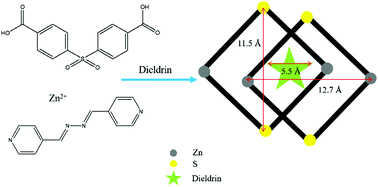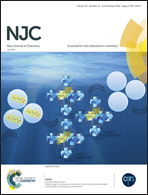Acid- and base-stable porous mechanically interlocked 2D metal–organic polyrotaxane for in situ organochlorine insecticide encapsulation, sensing and removal†
Abstract
A new porous 2D metal–organic polyrotaxane, [Zn2(sdb)2(4-bpdb)]·2DMF (1) 4,4′-sulfonyldibenzoate (sdb), 4-bis(4-pyridyl)-3,4-diaza-1,3-butadiene (4-bpdb), possesses channels that can encapsulate dieldrin in situ and remove it, which is a harmful organochlorine insecticide to form a host–guest system. The pH stability, strong luminescent nature, high sensitivity and complete quenching of 1 in the presence of dieldrin demonstrate its potential as a potential sensor for dieldrin.



 Please wait while we load your content...
Please wait while we load your content...